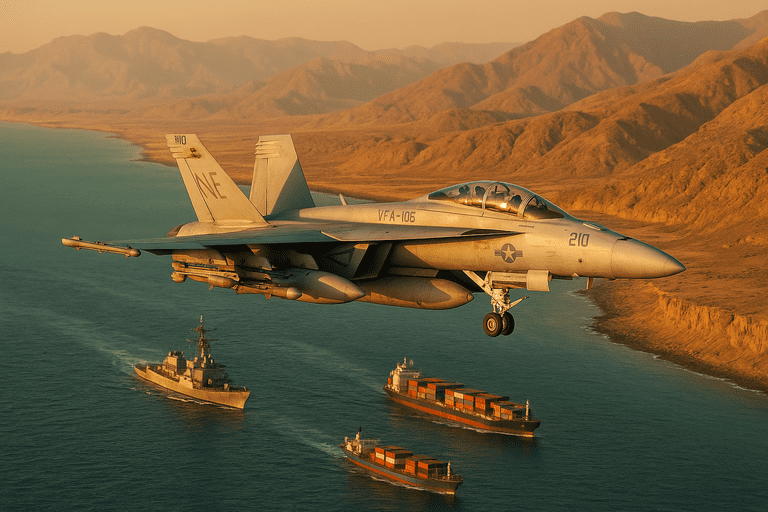In March 2025, the United States initiated a series of air and naval strikes against Houthi targets in Yemen, marking the largest U.S. military operation in the Middle East during President Donald Trump’s second term. Codenamed Operation Rough Rider, these strikes commenced on March 15, targeting radar systems, air defenses, and ballistic and drone launch sites utilized by the Houthis to attack commercial ships and naval vessels in the Red Sea and Gulf of Aden. The United Kingdom joined the United States in conducting strikes on Houthi targets on April 30, 2025.
The Houthis, a Shia Islamist military and political group backed by Iran, have controlled northern Yemen, including the capital, Sanaa, since 2014. They began targeting international shipping in October 2023, following Israel’s invasion of the Gaza Strip in response to the October 7 Hamas attacks. Claiming solidarity with Palestinians, the Houthis launched missiles and drones at vessels near Yemen, aiming to pressure Israel into agreeing to a ceasefire and lifting its blockade of Gaza.
The U.S.-led strikes in March 2025 were a response to these Houthi attacks on shipping routes. The initial wave of at least 40 air raids targeted multiple locations across Yemen, including the capital Sanaa and Saada Governorate. Subsequent strikes continued through April, with the United Kingdom joining the operations on April 30.
On May 6, 2025, a ceasefire between the United States and the Houthi movement, brokered by Oman, took effect. The Houthis agreed to halt their attacks on vessels in the Red Sea but emphasized that the ceasefire did not apply to Israel, which had begun launching its own strikes on Yemen.
The U.S. military’s involvement in Yemen underscores the complexities of Middle Eastern geopolitics. The Houthis’ actions disrupted global trade, with Red Sea cargo shipments decreasing by 70% in volume due to their attacks. The U.S. response aimed to protect international shipping lanes and maintain regional stability.
The operation required significant resources, including the deployment of B-2 Spirit stealth bombers to Diego Garcia, an air base in the Indian Ocean. This marked the first significant deployment of B-2s to Diego Garcia since 2020, indicating the scale of the operation.
The ceasefire, while halting immediate hostilities, does not address the underlying issues in the region. The Houthis’ continued targeting of Israeli interests and the broader Iranian influence in Yemen remain points of concern. The U.S. military’s engagement in Yemen reflects a broader strategy to counter Iranian-backed groups and protect international shipping routes.
The operation also highlights the logistical challenges of sustained military engagement in the region. The deployment of advanced aircraft and naval assets, coordination with allied forces, and the management of international diplomatic relations require substantial resources and planning. The ceasefire provides a temporary reprieve, but the potential for future conflicts necessitates ongoing vigilance and preparedness.
In summary, the U.S. military’s actions in Yemen demonstrate a commitment to protecting international shipping lanes and countering regional threats. The ceasefire offers a pause in hostilities, but the complexities of Middle Eastern geopolitics require continued attention and resources to maintain stability and address emerging challenges.
—
Ryan Mitchell reports on military funding, defense policy, and veteran support systems. He is a graduate of The Citadel and served as a civilian analyst for the Department of Defense before entering journalism. His reporting draws on firsthand knowledge of procurement systems, veterans’ programs, and the long-term cost of military readiness.



